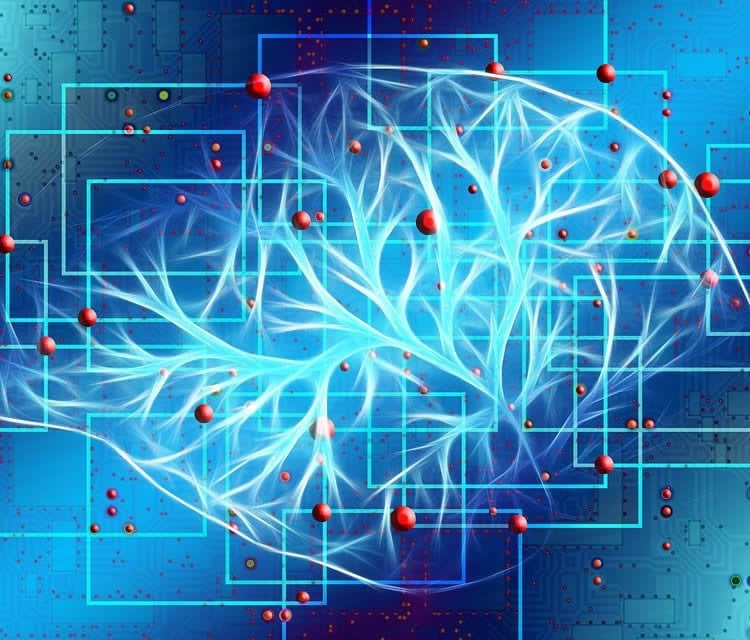Summary: Researchers have identified a previously unknown form of neural communication. They report the findings could help better the understanding of neural activity associated with specific brain processing and neurological disorders.
Source: Case Western Reserve University.
Biomedical engineering researchers at Case Western Reserve University say they have identified a previously unidentified form of neural communication, a discovery that could help scientists better understand neural activity surrounding specific brain processes and brain disorders.
“We don’t know yet the ‘So what?’ part of this discovery entirely,” said lead researcher Dominique Durand, the Elmer Lincoln Lindseth Professor in Biomedical Engineering and director of the Neural Engineering Center at the Case School of Engineering. “But we do know that this seems to be an entirely new form of communication in the brain, so we are very excited about this.”
Until now, there were three known ways that neurons “talk” to each other in the brain: via synaptic transmission, axonal transmission and what are known as “gap junctions” between the neurons.
Scientists have also known, however, that when many neurons fire together they generate weak electric fields that can be recorded with the electroencephalogram (EEG). But these fields were thought to be too small to contribute to neural activity.
These new experiments in the Durand’s laboratory, however have shown that not only can these fields excite cells, but that they can produce electric fields of their own and generate a self-propagating wave of activity.
This newly found form of communication was discovered while scientists at Case Western Reserve were analyzing the propagation mechanism of relatively fast brain waves similar to those generated when we sleep. They call it ephaptic (or electric) coupling, a reference to the known and observed low-level electric field in the brain—but now believed to also be capable of generating neural activity.
“We’ve known about these waves for a long time, but no one knows their exact function and no one believed they could spontaneously propagate,” Durand said. “I’ve been studying the hippocampus, itself just one small part of the brain, for 40 years and it keeps surprising me.”
Stunning experiment
That surprise peaked during a series of experiments in which Durand and his team observed a wave “leap” across a cut they had made in brain tissue slice—a phenomenon they conclude could only be explained by the electric field coupling.

Again and again, the brain-wave appeared to jump across the empty gap. Picture a stadium fan “wave” as it hits the empty bleachers in center-field. You expect the wave to sputter out, but it gets picked up again by the crowd in right-field and keeps coursing through the crowd.
Except this was wave behavior in a neural tissue that had never been reported before by neuroscientists, or anyone else, the scientists said.
Durand said he didn’t believe it when he saw it. Neither did the fellow researchers in his lab or a partner at Tianjin University in China.
“It was a jaw-dropping moment,” he said, “for us and for every scientist we told about this so far.”
Among the dubious: The review committee at The Journal of Physiology, which required the researchers from Case Western Reserve to perform further experiments to double- and triple-check their work before agreeing to publish the work.
“But every experiment we’ve done since to test it has confirmed it so far,” Durand said.
Source: Mike Scott – Case Western Reserve University
Publisher: Organized by NeuroscienceNews.com.
Image Source: NeuroscienceNews.com image is in the public domain.
Original Research: Open access research for “Slow periodic activity in the longitudinal hippocampal slice can self‐propagate non‐synaptically by a mechanism consistent with ephaptic coupling” by Chia‐Chu Chiang, Rajat S. Shivacharan, Xile Wei, Luis E. Gonzalez‐Reyes, and Dominique M. Durand in The Journal of Physiology. Published October 8 2018.
doi:10.1113/JP276904
[cbtabs][cbtab title=”MLA”]Case Western Reserve University”Discovering a New Form of Communication in the Brain.” NeuroscienceNews. NeuroscienceNews, 17 February 2019.
<https://neurosciencenews.com/brain-communication-10755/>.[/cbtab][cbtab title=”APA”]Case Western Reserve University(2019, February 17). Discovering a New Form of Communication in the Brain. NeuroscienceNews. Retrieved February 17, 2019 from https://neurosciencenews.com/brain-communication-10755/[/cbtab][cbtab title=”Chicago”]Case Western Reserve University”Discovering a New Form of Communication in the Brain.” https://neurosciencenews.com/brain-communication-10755/ (accessed February 17, 2019).[/cbtab][/cbtabs]
Abstract
Slow periodic activity in the longitudinal hippocampal slice can self‐propagate non‐synaptically by a mechanism consistent with ephaptic coupling
Slow oscillations are a standard feature observed in the cortex and the hippocampus during slow wave sleep. Slow oscillations are characterized by low‐frequency periodic activity (<1 Hz) and are thought to be related to memory consolidation. These waves are assumed to be a reflection of the underlying neural activity, but it is not known if they can, by themselves, be self‐sustained and propagate. Previous studies have shown that slow periodic activity can be reproduced in the in vitro preparation to mimic in vivo slow oscillations. Slow periodic activity can propagate with speeds around 0.1 m s−1 and be modulated by weak electric fields. In the present study, we show that slow periodic activity in the longitudinal hippocampal slice is a self‐regenerating wave which can propagate with and without chemical or electrical synaptic transmission at the same speeds. We also show that applying local extracellular electric fields can modulate or even block the propagation of this wave in both in silico and in vitro models. Our results support the notion that ephaptic coupling plays a significant role in the propagation of the slow hippocampal periodic activity. Moreover, these results indicate that a neural network can give rise to sustained self‐propagating waves by ephaptic coupling, suggesting a novel propagation mechanism for neural activity under normal physiological conditions.







